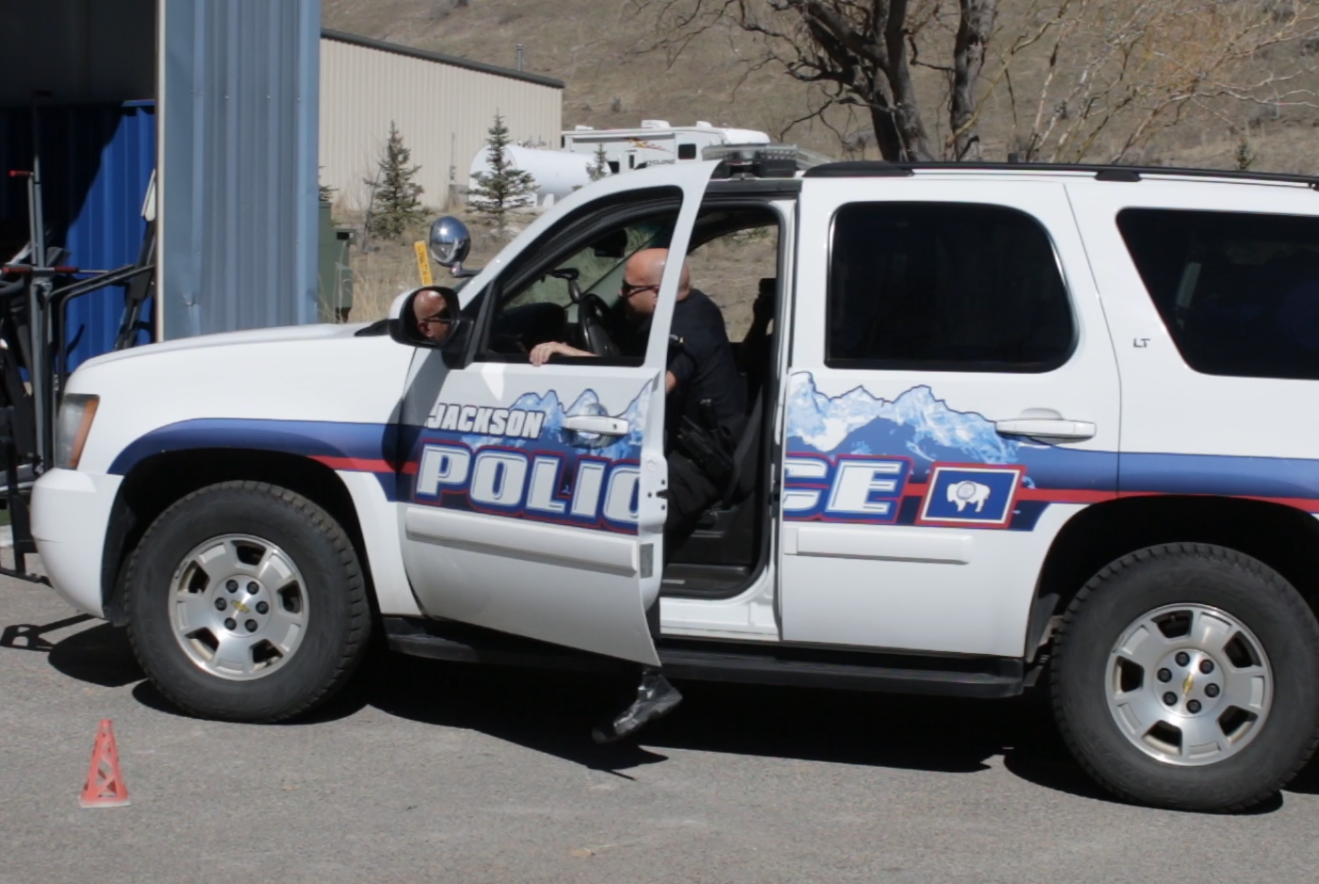By Rob Shaul
Background
With this Mini-Study, we were interested in developing the most efficient method for rapidly egressing from a patrol vehicle to get into a firing/protective position. Think of a patrol officer having to exit his vehicle to return fire and/or give chase. We want to take a deep dive on this – movement patterns, duty belt loading, and positioning, equipment issues (seat design, seat belt design and release, steering wheel interference, sedan vs. SUV, etc.)
Session 1, 3.20.15
Two officers with the local Jackson Police Department volunteered to help us out with this study. Kyle is a big guy, 6 foot, 4 inches, and his duty vehicle is a Chevy Tahoe.
Greg is medium sized – 5’9” or so. His duty vehicle is a Chevy Impala sedan.
To start we had each officer completed an egress from each vehicle three times. Starting with the shifter in “Drive”, on “go,” the officer drove the vehicle forward 40 feet to a set of cones, and egressed as fast as possible, weapon drawn, to a tactical position behind his open vehicle door.
We timed each effort. The clock started on the go and ended when the officer had his weapon fully drawn.
Below are the results. Time is in seconds.
SUV Egress – Chevy Tahoe
Kyle Greg
SUV 1: 6.63 8.95
SUV 2: 5.94 7.21
SUV 3: 6.94 7.37
Ave 6.50 7.84
Overall Ave 7.17 Seconds
Sedan Egress – Chevy Impala
Kyle Greg
SEDAN 1: 9.36 6.63
SEDAN 2: 7.22 6.35
SEDAN 3: 7.5 5.94
Ave 8.03 6.31
Overall Ave 7.17 Seconds
Initial Observations and Notes
1) The combined (both officers) average egress time was the same – 7.17 seconds. This was somewhat surprising to me – as I felt going in the SUV egress would be faster overall.
2) Each officer was exactly 24% faster using his own vehicle. Vehicle familiarity is important.
3) Sedan egress for larger officers is difficult. Kyle struggled with the Impala. He explains some of the issues at the end of the video.
4) Test limitations may not mimic the “real thing.”
Both officers noted that if they are responding to a call when they know they will be doing an emergency vehicle egress, their seatbelt would be off, door unlocked and likely held open before arriving. For purposes of this study, we wanted the seatbelt on. On a broader scale, we’re interested in seatbelt design.
5) Seatbelt across the chest or under arm?
Greg positioned the seatbelt under his left arm so it wouldn’t interfere with his handset. Kyle left it across his chest – one issue both spoke about was the belt getting hung up on the radio handset.
6) Seatbelt design can be improved significantly.
Both vehicles were converted civilian vehicles and the officers struggled with the seatbelt design – belting up and unbelting around their duty belt, radio handset issues, etc. The local police department is upgrading to Ford Taurus Interceptors – specifically built for LE, but we’re not sure if these LE-specific vehicles have a different seatbelt design.
7) Holster Issues
In the video, you’ll see Kyle some with his holster in his filmed sedan run. He explains the holster mechanics in the later part of the video.
Looking Ahead
We put together a quick video of the officers’ fastest efforts for each vehicle (shot from both inside and outside the vehicle), as well as an explanation of the holster issue, and Kyle talking about sedan design and egress for bigger officers like him.
We intend to do a closer video analysis and look for movement and gear efficiencies which could speed things up.
We would encourage and appreciate any movement, technique, gear or any other suggestions from LE officers. If you have any suggestions, tips or comments, please email them to rob@mtntactical.com
You Might Also Like MTI’s LE Athlete Fitness Assessment


